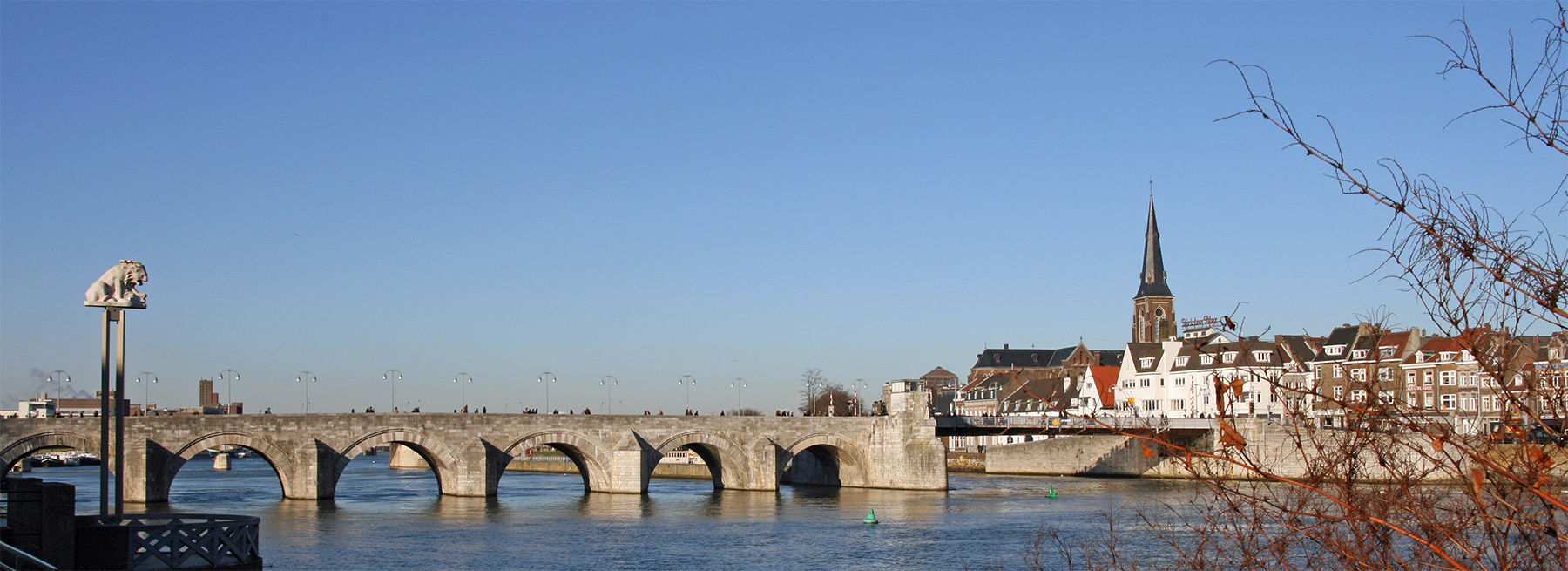Maastricht is known for its picturesque squares, romantic streets, and historical buildings. The tourist information office (VVV) is located in the Dinghuis, a 15th-century former town hall and law courts building on the corner of Grote Staat and Kleine Staat. The main sights include:
Inner city:
- Inner-city shopping district, including Grote Staat and Kleine Staat, and high-end shopping street Stokstraat. Maastricht is also well known for its cafés, pubs and restaurants.
- Dinghuis, a medieval courthouse with an early Renaissance façade
- Entre Deux, a recently rebuilt shopping centre which has won several international awards.
- Dominican church, a bookstore located in a former 13th-century Dominican Church. In 2008 the British newspaper
- The Guardian proclaimed this the world’s most beautiful bookshop.
- Sint Servaasbrug, the oldest bridge in the Netherlands
Vrijthof:
- This famous square is considered by many to be the beating heart of the old city. It features the massive St Servaas Church and St Jan’s Cathedral and hosts a range of large festivals throughout the year. The Carnival before Lent is an amazing occasion where (it seems) the whole city dresses up in costume and parties until the early hours. It really has to be seen to be believed
- Sint-Servaas Basiliek, the Romanesque church of Saint Servatius. The tomb of Saint Servatius in the crypt is a favored place of pilgrimage: Pope John Paul II visited here in 1985.
- Sint-Janskerk, a sandstone Gothic church dedicated to Saint John the Baptist with a distinctive red tower. It is the city’s main Protestant church.
- Theater aan het Vrijthof, the main city theatre, with a Neoclassical façade.
Onze Lieve Vrouwenplein:
- A picturesque treelined square with an abundance of pavement cafés.
- Basilica of Our Lady, an 11th century church, commonly known as the Star of the Sea, after an old title for the Virgin Mary.
- Derlon Museumkelder a small museum in the basement of Hotel Derlon with Roman remains.
Markt:
- The fairly large market square has been the stage for markets for centuries,and still houses goods markets on Wednesdays and Fridays. It’s a lively square, surrounded by cafés, shops and eateries.
The Town Hall, built in the 17th century by Pieter Post. - Mosae Forum, a brand new shopping center and civic building.
Bassin:
- A restored early 19th century inner harbor with restaurants and cafés.
Jekerkwartier :
- A picturesque neighborhood with the small river Jeker popping up between old houses and remnants of city walls.
Wijck:
- The old quarter on the right bank of the Meuse river. Rechtstraat is the main shopping street in Wyck with a mix of specialty shops, art galleries and restaurants.
Ceramique:
- A modern neighbourhood on the site of the former Céramique potteries. Now a showcase of architectural highlights and musea like the Bonnefanten Museum which is one of the foremost museum of Old Masters and contemporary art in the province of Limburg
City Fortifications:
- Helpoort: a 13th-century town gate, the oldest in the Netherlands
- Fragments of the first and second medieval city walls
- Hoge Fronten (or Linie van Du Moulin): remnants of 17th- and 18th-century fortifications with a number of well-preserved bastions and an early 19th-century fortress, Fort Willem
- Casemate, an underground network of tunnels, built as sheltered emplacements for guns and cannons. These tunnels run for several miles underneath the city’s fortifications. Guided tours are available.
Parks:
- Stadspark, the main public park on the west bank of the river.
- Monsigneur Nolenspark, an extension of Stadspark with remnants of the medieval city walls.
- Aldenhofpark, another extension of Stadspark, with a statue of d’Artagnan.
- Charles Eykpark, a modern park between the public library and Bonnefanten Museum on the east bank of the Meuse river.
- Griendpark, a modern park on the east bank of the river with an inline-skating and skateboarding course.
Sint-Pietersberg:
- Fort Sint-Pieter, an 18th-century fortress fully restored in 2008.
- Grotten Sint-Pietersberg (caves) - a sandstone (marl) quarry with a network of man-made tunnels. Kasteelruïne Lichtenberg, a farmstead containing a ruined medieval castle keep.
- D’n Observant, an artificial hilltop on Sint-Pietersberg.
